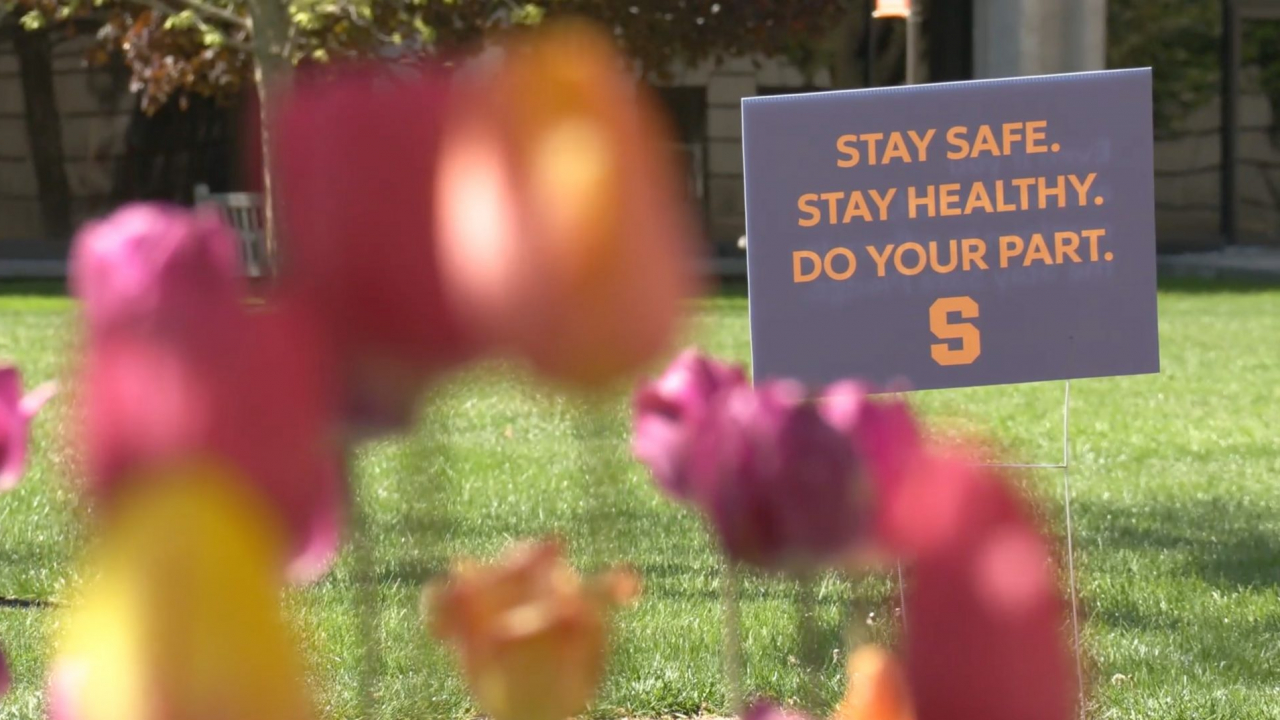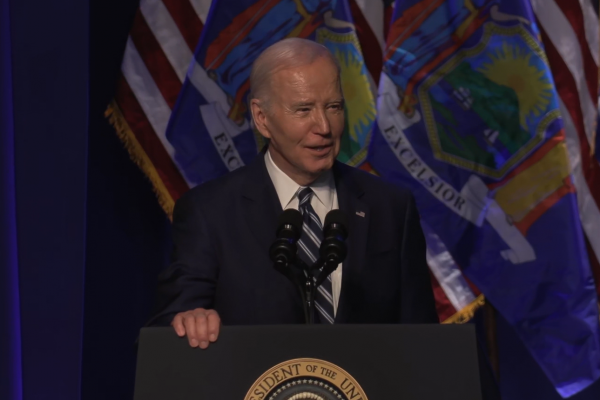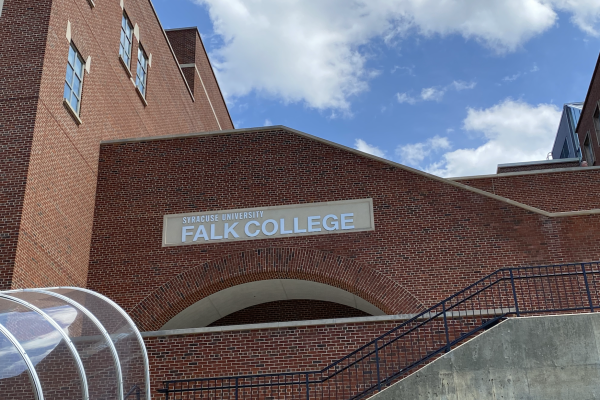
SYRACUSE, N.Y. (NCC News) – It took about three and half bathtubs worth of saliva to keep Syracuse University in-person this semester.
The approximately 150 gallons of spit samples collected this semester inside the Carrier Dome made the facility seem purpose-built for this effort – as many freshmen and sophomores came to know the facility more for its test tubes than its three-pointers.
Pruthvi Kilaru, who oversaw Carrier Dome testing for SU’s Department of Public Health, said many don’t realize the scale of the testing operation. “We do anywhere from 2,500 to 3,500, and in some cases 4,500 tests a day. So that volume actually puts us at one of the largest testing sites in the state of New York,” Kilaru said.
The required weekly compliance testing for students – less frequently for some staff and faculty – became a routine for the spring semester.
Students, faculty and staff would enter through the Carrier Dome’s revolving doors, wait in socially-distanced lines before going to one of roughly a dozen check-in booths where a student assistant would hand them a test tube with a unique identifier. After checking-in, people would head to privacy booths where they would fill the tube with two to three milliliters of saliva. To avoid receiving inconclusive results, students had to reach their test tube’s marked fill line and avoid any food or drinks for the 30 minutes before depositing their sample.
But the logistical challenge of doubling testing capacity and speeding up result times between the fall and spring semesters would require more than just retrieving enough saliva and making sure it didn’t have chunks of food in it.
In the fall, SU used a sporadic surveillance testing program where students would periodically get a nasal or mouth swab that would be sent to an off-campus lab at Upstate Medical Center.
This semester, the school switched to weekly compliance testing, monitoring the student body through saliva samples processed entirely on campus. A switch designed to avoid the in-person pause that occurred at the end of last semester – hoping to pinpoint COVID-19 cases and isolate them before they spread.
To achieve the goal of doubling capacity and speed, the test tubes, after getting sterilized by Kilaru’s team in the Carrier Dome, get sent to a pooling lab in the Life Sciences complex. Inside that lab, the saliva samples meet a team of dedicated student assistants who process individual tubes and collect them into bags of twelve.
Those bags of twelve are tossed across the room to student poolers like Camille Juliano.
“We vortex [the samples], which spins them all up, and mixes all of [the saliva] around. And then we put a tiny sample of all twelve spit samples into a small tube,” Juliano said.
By “pooling” 12 samples into one tube for testing, the university is able to cut down the number of diagnostic tests it needs to perform in the lab.
For example, let us take a random group of 1,200 students, of which only one person is COVID-19 positive. The university could opt to run each of those 1,200 samples individually and use a PCR test for each.
But this option is especially costly when there are relatively few cases of the virus. This process is also particularly time consuming when the goal is to not just find cases but find them quickly to be able to quarantine them before they begin spreading.
By using pooling in this example, the university would use only 100 PCR tests to measure the virus within the 100 pools of 12 students. If only one student in the batch was COVID-19 positive, then only the pool that student belongs to would indicate positivity. The university can then be certain that 1,188 of those students tested negative (99 pools of 12 students). The school would only need to retest one group of 12 students to locate the positive individual.
In other words, by pooling the university needs only 112 tests to find one positive case as opposed to 1,200 individual tests to find the same case.
Deepa Singh, who runs the PCR testing lab inside the Life Sciences Complex, said that this process has allowed her team to monitor cases on campus with an increased granularity – including a recent and significant drop in positive cases.
“The last couple of week’s there’s been a decline in the number of cases, and I think it’s because of vaccination.” Singh said. “We are hopeful.”




